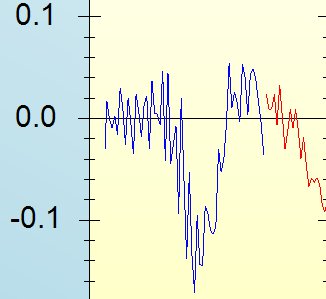In the beginning, there were real business cycle models of the kind pioneered by Kydland and Prescott. These attempted to provide a rationale for the existence of smooth business cycles by examining how rational, utility maximising economic agents respond to random shocks by redistributing their activity over time. Eventually these models developed into what we now call dynamic stochastic general equilibrium (DSGE) models. These models initially adopted the market clearing assumptions made in the original real business cycle models. More recently, models have become more general and have introduced the notion of staggered price adjustments. The latter models are often referred to as new Keynesian variants, and the work of Michael Woodford is typical of this endeavour.
All of the models referred to above are designed to build up a story of macroeconomic behaviour using a strong set of microeconomic foundations. They are based on individual economic agents that are acting rationally. By drilling right down to the preferences of agents, the macroeconomic behaviour of the models is supposed to finesse the problem raised by the Lucas critique - the notion that, since a change in policy might change the way in which people respond to policy, models based on these responses cannot be used as forecasting tools. (But since people's preferences don't change in response to policy - only their behaviour does - models built on what we know about people's preferences are deemed to be robust.) In consequence, DSGE models have attracted much interest amongst central bankers.
But DSGE models are difficult to work with. Studying individual decision making in a dynamic environment - where attention has to be given to the way in which people form, and respond to, expectations about the future as well as how they respond to the past - involves a lot of complicated analysis. Simplifications have to be made. This being so, early DSGE models have focused on output and prices. While results from some of the models have been encouraging, many economists - myself included - have been underwhelmed by the general approach. This is because the models have failed to consider a world in which some people are unemployed. In other words, they have failed to consider anything that looks, even remotely, like the real world.
All that is set to change. Jordi Galí, one of the pioneers of new Keynesian DSGE models, has recently published work that accommodates the existence of unemployment. This has been built upon in
further work done in collaboration with Frank Smets and Rafael Wouters. It's still early days, but the promise of DSGE modelling looks as though it may well be realised.
Galí, J. (2011). THE RETURN OF THE WAGE PHILLIPS CURVE Journal of the European Economic Association DOI: 10.1111/j.1542-4774.2011.01023.xKydland, F., & Prescott, E. (1982). Time to Build and Aggregate Fluctuations Econometrica, 50 (6) DOI: 10.2307/1913386Lucas Jr, R. (1976). Econometric policy evaluation: A critique Carnegie-Rochester Conference Series on Public Policy, 1, 19-46 DOI: 10.1016/S0167-2231(76)80003-6Woodford, M., & WALSH, C. (2005). INTEREST AND PRICES: FOUNDATIONS OF A THEORY OF MONETARY POLICY Macroeconomic Dynamics, 9 (03) DOI: 10.1017/S1365100505040253


